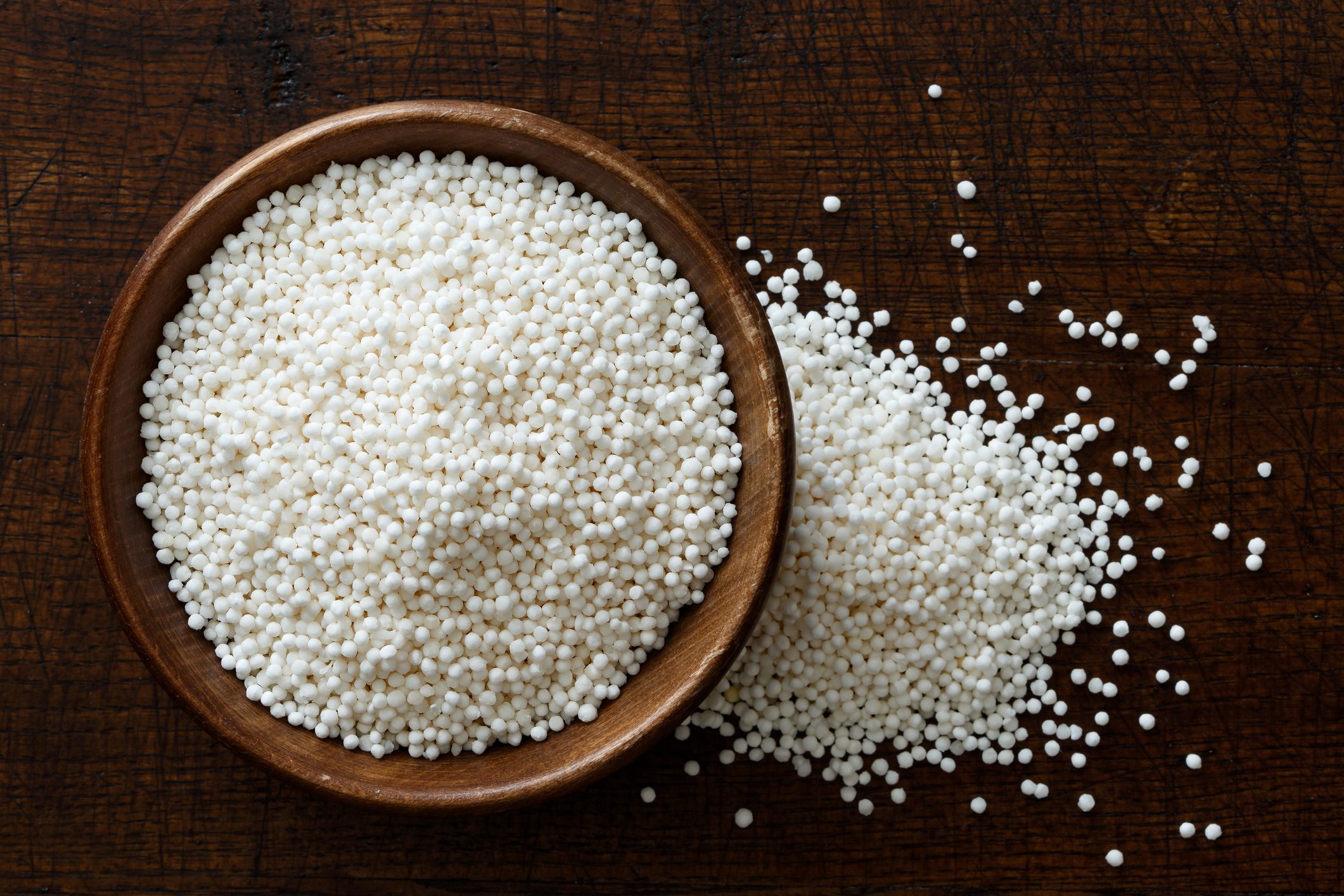Tapioca: 11 properties of digestible and gluten-free food that helps the intestine
Tapioca is a very energetic and easily digestible food, it is an excellent food for children and people in convalescence. Moreover, it is useful in case of colitis and digestive problems and it does not contain gluten.
;Resize,width=742;)
Tapioca is a very energetic and easily digestible food, it is an excellent food for children and people in convalescence. Moreover, it is useful in case of colitis and digestive problems and it does not contain gluten.
The tapioca starch is obtained from the Cassava, an hard-skinned tuber that contains a white pulp inside, from which are obtained both the flour and the tapioca pearls to be used in the kitchen for different preparations. The tuber is dried to obtain a raw flour composed of irregular grains that resemble small white pearls: that is tapioca. But let's see what the benefits of this starch are.
Properties and benefits of tapioca
1. Tapioca helps the intestine: tapioca is a light food that contains few waste, it helps digestion and it is a panacea for the digestive system, so it is also used as food for children. The tapioca cooked in milk makes it more digestible: during cooking, the granules of the starch swell and disperse lactose and casein, encouraging digestion. Tapioca also contains resistant starch, which is important for the health of the intestine. It is a starch that is not completely absorbed but it reaches the colon in the form of fiber, also functioning as a powerful anti-inflammatory. This is why tapioca is useful in all diseases of the digestive tract, including colitis and irritable bowel syndrome.

2. Tapioca is a panacea against colitis: thanks to its digestibility, tapioca is an excellent food in case of colitis. It contains very few cellulose, a vegetable substance that does not disperse in the stomach, and this makes it easy to assimilate without leaving residues.

3. Tapioca gives energy: tapioca is also a multi-energy flour suitable for children, athletes but also for those who must recover after a period of illness, it is in fact recommended after convalescence because it helps to regain strength. All this thanks to the simple carbohydrates of which it is rich and which ensure a high level of energy that will allow you to face the day without sugar drops.

4. Tapioca has a great caloric power: tapioca contains many calories, around 360 per 100 grams of product. From the nutritional point of view, however, it is deficient in vitamins, proteins and minerals, while it is composed almost exclusively of carbohydrates, which give it its digestibility. This is why tapioca cannot be a single food but it must be combined with foods that contain vitamins, proteins, fats and minerals, to compensate for the elements it is lacking.

5. Tapioca is useful in case of digestive difficulties: tapioca cooked in milk, is a recommended food especially for children and infants with digestive difficulties, and for those people who need a super nutrition and, therefore, to easily assimilate nutrients.

6. Tapioca is suitable for those suffering from celiac disease: tapioca is a naturally gluten-free food suitable for those suffering from celiac disease and that can be used instead of normal flours with gluten. However, care must always be taken during the purchase, as it is first necessary to make sure that during the production the tapioca has not come into contact with flour containing gluten, such as wheat flour. On the packaging, there must be the crossed-out spike symbol or the word "gluten-free".

7. Tapioca helps to lose weight: tapioca helps to lose weight because it promotes a sense of satiety, thanks to the low glycemic index (GI) and it reduces the deposit of fats in the cells, helping to control even triglycerides and lipids in the blood.

8. Tapioca improves circulation and regulates blood pressure: tapioca is an excellent source of potassium which is a powerful vasodilator, thus helping to reduce the stress of blood vessels preventing strokes and heart attacks as it lowers the risk of atherosclerosis and blood clots. It also contains iron that, in addition to being useful in case of anemia, also ensures a better flow of blood and oxygen to the cells, thanks to the increased production of red blood cells to all organs.

9. Tapioca is excellent against metabolic syndrome and autoimmune diseases: tapioca has a low glycemic index, so it does not create insulin and glycemic peaks, so it is a food that can be consumed instead of refined flours. Eating foods such as tapioca, which contain resistant starches, helps decrease blood sugar, lowering blood glucose, bad cholesterol and triglycerides, improving insulin sensitivity. Furthermore, resistant starch of tapioca helps to recover from the chronic inflammation present in autoimmune diseases.

10. Tapioca prevents osteoporosis: tapioca also contains vitamin K, in addition to iron and calcium, important elements for bone development, which protect against the risk of osteoporosis, arthrosis and bone fragility.

11. Tapioca keeps the brain healthy: in addition to strengthening the bones, tapioca is important for neurological health: vitamin K, in fact, also reduces the risk of getting Alzheimer's disease because it stimulates the neuronal activity of the brain, and contrasts the harmful action of free radicals.

;Resize,width=767;)
;Resize,width=712;)
;Resize,width=712;)
;Resize,width=712;)
